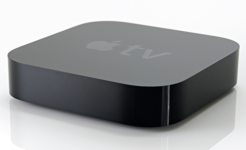
How Ultrasonic Sound Tracks Your Activity Online
I ever decide to start my own club, it will be the Paranoids Club. The first rule of Paranoids Club is: Never trust a gadget. The second rule of Paranoids Club is: If you think you aren’t being tracked, you just don’t know you are. Smartphones can share your location through GPS or check you into a public place you’ve never been to, but perhaps just passed by while Wi-Fi was turned on in your pocket. But, what I’m talking about here is much more dangerous for your privacy that that.
Meet cross-device tracking – the technology to report your every move and liking. With this, you’ll be tracked across all the gadgets you possess: smartphones, smart TVs, desktops, tablets, laptops. In other words, all the devices with microphones sensitive enough to pick up an ultrasound. What is that? Ultrasound is the high frequency sound than cannot be perceived by a human ear. Yes, our hearing range is narrower than that of animals and birds, and maxes out at about 20 KHz. Young adults are more perceptible and can hear the sounds up to 17.6 KHz. That’s why ‘secret’ ultrasonic SMS alerts and ringtones are so popular among teenagers. Most adults lose the ability to pick up the higher sounds over the age of 30. For instance, the mosquito buzz is about 17 KHz and some people just can’t hear the insects.
But what you can’t hear – your smartphone or tablet can. Our inability to hear the ultrasonic sound gives a splendid opportunity to build a side channel of communication between your smartphone and an ultrasound emitter. Many Android and iOS apps opens the microphone without you knowing it. Potentially, any app that asks an access to your microphone after the being installed is capable of doing it.
With a mic on your smartphone, it can now catch special sounds embedded in audio and video ads. These sounds are called ultrasonic beacons, or simply beacons. They spy on your location, social network profile, places you visit, TV shows you watch. A group of researchers from Braunschweig University, in Germany, discovered that of 35 stores in two European cities, 4 use the ultrasonic beacons embedded into their ads. While their research hasn’t discovered the same beacons in TV streaming yet, there are 234 Android apps that are listening for those beacons all the time. This is a background process, hidden from a user’s eye.
Some of them aren’t so reticent. Shopkick, Lisnr and Signal360 not only send away your location, but entice you into the areas with the ultrasonic emitters by vouchers and coupons. Let me repeat that again: the app on your phone not only collects the data about your locations and habits, but sends it away to the ad company servers, without your knowledge or approval.
So, this technology is not far away or just around the corner; it’s happening already in your own home. And Google’s Universal Analytics and Facebook’s Conversion Pixel are among the companies who provide the corresponding service to their customers! The patent for software that embeds the beacons into audio and video streams, and on the other hand, enables the phones to answer back, belongs to SilverPush. This is an Indian company based in San-Francisco. The signals lie within 18kHz to 19.95kHz and send inaudible commands to your device. Every letter and figure has the correspondent frequency as the reversed engineering by Kevin Finisterre showed. If asked, your smartphone can send also IMEI, operation system version and potentially – passwords.
So, if you watch a TV show with your smartphone or tablet nearby, it can secretly determine what ads you’re going to see during the ads pause. It works like that. An 18kHz sound corresponds to an ‘A’, and 19.125kHz to a ‘P’. Together they get ‘AP’ which means “Display a Geico ad image and link”. And keep in mind, that ultrasonic beacons can be imitated by hackers to weasel the sensitive private information from your phone. The ultrasonic sound is too weak, it dissipates easily and can be as easily blocked or warped.
What can we do to protect ourselves from being cross-tracked and manipulated? First, of course, you should deny the apps mentioned above Shopkick, Lisnr and Signal360 or any other similar app that promises something for visiting certain places. Second, our greatest weapon should be a robust and meaningful opt-out system. One like the Federal Trade Commission stands for. They already made SilverPush drop the use of technology in the USA territory, but this is too juicy a business to be dropped just like that.
Third, I think that pet rights activists should say something out loud. Just imagine those ultrasonic emitters installed everywhere: stadiums, streets, parks, cafes. For dogs and cats, an ultrasonic sound is just an ordinary sound they hear, a buzz or a squeak. While some animals are indifferent to such sounds, others get scared and depressed. If you browse pet owners’ forums, you’ll find such stories in plenty. Dogs can be scared half to death by ultrasonic the devices used against mice or mosquitoes. They can even get seriously ill with fear and distress. There’s also no way to know how the massive use of emitters will influence urban populations of birds and animals. It’s known by now, that pigeons aren’t afraid of ultrasound and bats get used to it very quickly, but nobody has researched the urban wildlife under ultrasonic emitters for an extended amount of time.
My personal opinion, is that ultrasonic cross-device tracking should by prohibited by law, since it not only violates our privacy, but also can bring harm upon nature.
Meanwhile, you can always get rid of your obsolete electronics by selling them on iGotOffer Website for top dollar: Sell Used gadgets now!

Photo: iGotOffer.com






Facebook
Twitter
RSS